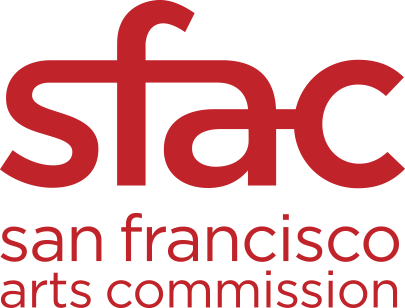Previously released statements regarding the San Francisco Civic Art Collection Monuments and Memorials AND FAQ:
Arts Commission
At this important time in our country, we are all examining the ways in which institutional and structural racism permeate our society. Public art is no exception. In cities across the US, many historic monuments are being taken down because the actions and ideas symbolized do not deserve to be venerated. Representation matters. That’s why we can, and should, continue to create artwork that reflects our values, and the diverse communities we serve.
Joint statement from Sups. Peskin and Stefani and Mayor London Breed
The statue of Christopher Columbus has been removed from its position near Coit Tower and placed in storage. At a time of great unrest and deep reflection both locally and nationally, we recognize that Christopher Columbus is a deeply polarizing figure in our history and a symbol of pain and oppression to many, including and especially to indigenous people. Public art can and should honor the heritage of all our people, including our Italian-American community, and in doing so we should choose symbols that unify us. The Arts and Recreation and Parks Commissions will engage in a public process to determine what art work should go in that space near Coit Tower.
RECPARK Statement
Coit Tower is an emblem of the San Francisco skyline, beloved by visitors for its panoramic views. Racism has no place in that view, or in ours. The Christopher Columbus statue is a symbol of centuries of oppression targeting Native Americans. It is at odds with SF Rec and Park’s values of access and inclusion and our prioritization of parks and open space for marginalized communities. We are grateful to the Arts Commission for removing it from our property.
There is very real pain in this country rooted in our history of slavery and oppression, especially against African-Americans and Indigenous people. I know that pain all too well. But the damage done to our park last night went far beyond just the statues that were torn down, and included significant damage to Golden Gate Park. Every dollar we spend cleaning up this vandalism takes funding away from actually supporting our community, including our African-American community. I say this not to defend any particular statue or what it represents, but to recognize that when people take action in the name of my community, they should actually involve us. And when they vandalize our public parks, that's their agenda, not ours.
If we are going to make real change, let's do the work with our impacted communities to make that change. To do that, I have asked the Arts Commission, the Human Rights Commission, and the Recreation and Parks Department and its Commission to work with the community to evaluate our public art and its intersection with our country's racist history so that we can move forward together to make real changes in this City. Who and what we honor through our public art can and should reflect our values.
1. What has happened to the monuments in Golden Gate Park?
The bronze statues of the Padre Junipero Serra (1906), General Ulysses Simpson Grant (1908), and Francis Scott Key (1887) monuments were toppled and defaced by a group of demonstrators on Friday night, June 19. Their remaining pedestals along with a number of other monuments and public cultural ephemera in the Golden Gate Park Music Concourse were also vandalized. Additional Civic Art Collection works that were defaced include Leonitus (Roman Gladiator) (1881), The Cider Press (1892), Goethe and Schiller (1901), Miguel Cervantes (1916), the Rideout Fountain (1923), and Father William D. McKinnon (1927). The Sphinx sculpture and the Pool of Enchantment – which are under the jurisdiction of the Fine Arts Museums, San Francisco, were also vandalized. Based on the types of vandalism, some monuments appeared to be specifically targeted for political reasons while others appeared to have just been casualties based on proximity.
2. Where are they now?
The bronze sculptures are stored safely in an undisclosed, secure fine art storage facility (along with the Christopher Columbus statue that was removed by the City on June 18, 2020 and the Early Days sculpture that was removed from Pioneer Monument in September 2018).
3. When did the San Francisco Arts Commission remove the Christopher Columbus statue at Coit Tower?
The City removed the statue early Thursday, June 18, under direction of the Mayor.
4. Why did the San Francisco Arts Commission remove the Christopher Columbus monument?
The Columbus monument was removed because it doesn’t align with San Francisco’s values or our commitment to racial justice. The Columbus statue had been vandalized on multiple occasions the week of June 8. Staff had already commenced with an evaluation process, assessing options how to best engage the community regarding concerns about the monument. However, over the weekend of June 11-12, protest flyers were circulated online with a call to action for protestors to remove the statue themselves on Friday, June 19. We removed the statue quickly in the interest of public safety.
(On June 10 in Portsmouth, Virginia a person was gravely injured when a monument was pulled down and he was crushed. Then, on Monday, June 15 violence erupted in Albuquerque, New Mexico between vigilante groups and protestors over the removal of a public monument, which resulted in gunfire.)
5. Had the Christopher Columbus statue been vandalized before its removal?
Yes, it had been extensively vandalized on Indigenous People’s Day, 2019 and then again three times the week leading up to its removal, with red paint splashed on the statue’s face and hands. Similar statues across the country had been toppled by demonstrators during protests.
6. Are any of these monuments going to be for sale or given away?
The San Francisco Arts Commission has guidelines in place regarding the disposition of Civic Art Collection works that are removed from public view. These guidelines can be found on our website: www.sfartscommission.org/our-role-impact/about-commission/policies-guidelines/PublicArtCivic-Art-Collection
Each piece is evaluated individually and a number of options may present themselves through that process, including but not limited to, long term storage, long term loan, gift to another cultural institution or public sale.
7. What Is the city planning to do about toppled statues or statues removed by the City?
Per the Mayor’s directive (please see beginning of this document), the Arts Commission, in partnership with Recreation and Parks and the Human Rights Commission, will develop a process to assess the historic works in the collection that venerate individuals that do not reflect the City's racial justice values, and make recommendations on next steps. We look forward to engaging with the many communities we serve on these important conversations, and to providing additional information to the public in the coming weeks.
Updated 1/26/2021: The San Francisco Arts Commission will be announcing in early February an application process for members of the community interested in participating on the Monuments and Memorials Advisory Committee (MMAC). The MMAC will address the directive stated above, and convene to assess the historic works in the collection and present a report that includes guidelines of how to handle these works in the Civic Art Collection now and in the future. We anticipate the committee will meet approximately six times over several months. It will be co-chaired by the Director of Cultural Affairs, and leadership from the Human Rights Commission and the Recreation and Parks Department.
8. How is the city thinking about what to put, if anything, in their place?
This Arts Commission is working with the Human Rights Commission and Recreation and Parks Department to define a community engagement process to address these monuments. The first step will be establishing a set of criteria by which to assess each artwork. Discussions regarding replacements or new monuments will not be undertaken until the assessment of the existing collection is completed.
9. How may the public engage in the conversation about the future of these monuments?
We are happy to hear from members of the public about historical monuments in the Civic Art Collection to ensure we are gathering input from the broadest range of community members as we determine next steps. If you have any comments or suggestions, please email ART-info@sfgov.org or feel free to attend any of our public meetings. The Visual Art Committee had the first discussion about next steps on Wednesday, July 15. Please click here for the meeting minutes and audio archive.
10. What systems, if any, is the city putting into place to prevent the unplanned removal of statues by members of the public going forwards?
As the Mayor mentioned in her statement (see top of document), vandalism to the Civic Art Collection and our public spaces “takes funding away from actually supporting our community.” Our hope is that community engagement through the monument evaluation process we are outlining now, will help deter future unplanned removals – out of interest for public safety and with the opportunity for public dialogue.
11. Does the Arts Commission have records of the statues that get the most complaints and how much money has been spent in recent years to repair vandalism on them?
The Arts Commission keeps data on vandalism to the Civic Art Collection and tracks abatement costs. Complaints regarding individual pieces are registered – particularly if a citizen makes or submits public comment at our monthly commission and sub-committee meetings. Vandalism to the Civic Art Collection takes many forms, the bulk of which is non-political in nature. While political vandalism does occur to the Civic Art Collection, it is not a sole indicator determining the potential removal of a statue. In FY 2020, approximately $130,000 was spent on removal of all forms of vandalism of the Civic Art Collection.
12. Is there a list of all statues in the city’s public collection?
A searchable catalogue of artworks in the Civic Art Collection can be found on our website, here: kiosk.sfartscommission.org/index-tree/tree/45


